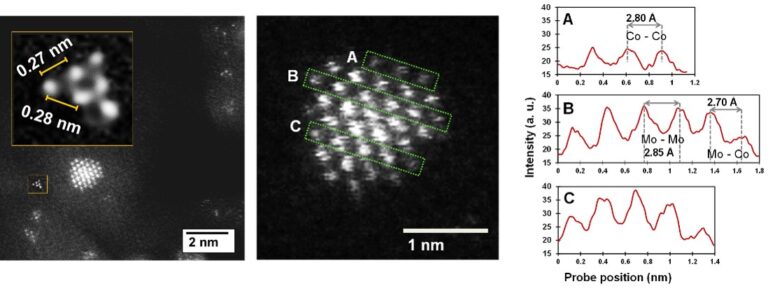Supported transition metal disulfide catalysts for ultra-deep ΗDS: Coupling of ΙR spectroscopy and high resolution electron microscopy for a deeper insight into active sites.
Résumé
17/12/2019 – 10H00 – Salle de conférence du CNRT
Keywords : HR STEM-HAADF, IR spectroscopy, DFT calculations, MoS2, WS2, CoMoS, NiWS, citric acid, hydrotreatment
This work was focused on obtaining an atomic scale characterization of the (Co)MoS2 and (Ni)WS2 slabs of hydrotreating catalysts supported on alumina and to determine the impact of citric acid (CA) addition. In this study, advanced techniques were implemented such as low temperature CO adsorption followed by IR spectroscopy (IR/CO), DFT calculations and high resolution electron microscopy observations in transmission mode and by STEM HAADF.
On the non-promoted W and Mo catalysts, CO adsorption makes it possible to discriminate between the sites of the M- and S- edges of the TMS slabs. The determination of the molar extinction coefficients of the adsorbed CO bands allows the morphology of the slabs to be deduced. HR STEM HAADF confirms that the addition of CA modifies the morphology of the TMS slabs from a truncated triangle to a hexagonal shape.
On the promoted NiW and CoMo catalysts, electron microscopy shows that the addition of CA decreases the size of the TMS slabs and also leads to the creation of very small clusters (<1 nm). The analysis of isolated particles by HR STEM HAADF allows identifying the nature of the atoms on the edge of the TMS slabs. Thus microscopy and IR/CO show that within the same sulfide slabs, can coexist edges that are fully promoted and partially promoted.

